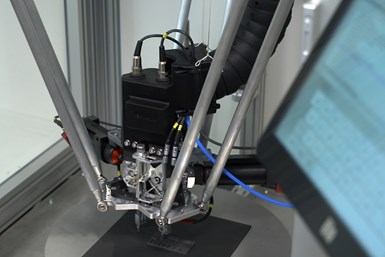Ceratizit Develops Award-Winning Carbide AM Process
Ceratizit has won FEDIL’s 2020 “Process” Innovation Award in recognition of its new process for additively manufacturing with tungsten carbide-cobalt.
Share






The Ceratizit Group has won the business federation’s “Process” 2020 Innovation Award for developing a new process for additively manufacturing with tungsten carbide-cobalt. This advancement adds a host of new possibilities for cemented carbide components.
Ceratizit’s new process will allow cemented carbide component manufacturers to leverage the same benefits of additive manufacturing as shops working with plastic, steel and other materials.
“Additive manufacturing of carbide products provides us with more flexibility in terms of implementing customer requirements and opens new design possibilities, which we can use to offer our customers highly optimized, individual solutions in minimum time,” says Ralph Useldinger, Ceratizit’s head of R&D. This also includes active support in optimizing product design.
Ceratizit points to the time and cost savings during the critical ramp-up of products in small batches and during manufacturing of high-complexity prototypes as the chief benefits of cemented carbide additive manufacturing. Producing the geometry directly from the design software allows for swift planning and implementation of projects, without needing production-intensive shapes and dies or the expensive, diamond-tipped tools necessary to machine carbide parts.
The company also draws attention to the wider range of shapes possible through additive manufacturing due to the direct production of free-form contours and geometries impossible or unfeasible with traditional manufacturing processes. These include structures with undercuts or areas inaccessible to cutting tools such as cavities and channels inside the finished body. Additive manufacturing of cemented carbide thus enables a higher degree of component complexity as well as a deeper level of integration while at the same time reducing the number of assemblies and individual components.
Related Content
-
Digitalization and Done-In-One Reign Supreme at BIEMH 2024
European manufacturers may have a different balance of markets than their U.S. counterparts, but the practical challenges they must overcome are often similar — as are the solutions.
-
Chuck Jaws Achieve 77% Weight Reduction Through 3D Printing
Alpha Precision Group (APG) has developed an innovative workholding design for faster spindle speeds through sinter-based additive manufacturing.
-
The Downloadable Metal 3D Printer
Copenhagen researchers introduce a fully open-source laser powder bed fusion system, now available on GitHub. This release follows their development of an open-source vat polymerization machine. Here is the purpose and promise of this philanthropically funded effort to advance additive manufacturing application and adoption.
















